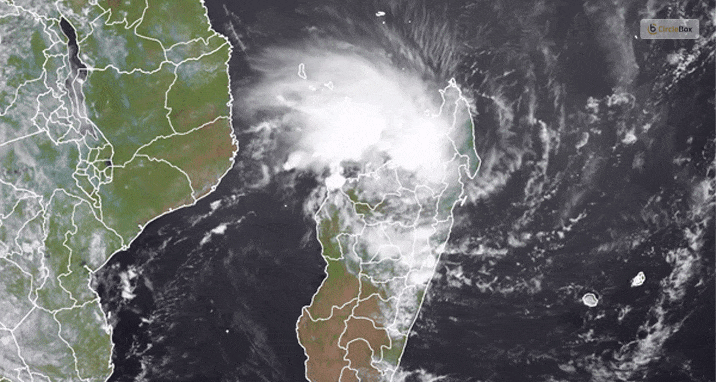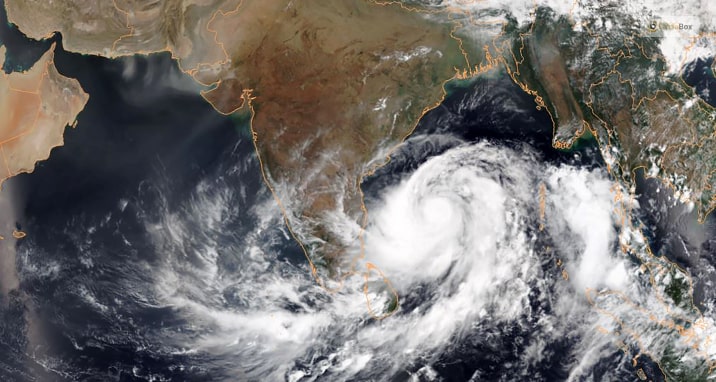Tropical storm Eloise South Africa created a big disaster in early 2021. The exact date when the tropical store Eloise hit South Africa is on the 24th of January. Eloise is a tropical cyclone that affects more than 175,000 people in Mozambique. Also, cyclone Eloise caused a lot of damage in South Africa and Madagascar.
Tropical Strom Eloise South Africa: Effect, Cause, And Pathway
Tropical cyclone Eloise is one of the strongest cyclones to have hit the southern portion of Africa in recent years. It was at its peak intensity on the day of the 22nd of January in 2021. The damages caused by the cyclone included displacement of people, death, spoiling of resources, causing damage to Covid precautionary measures, and much more.
The following are some of the significant factors related to tropical cyclone Eloise:
Cause Of The Tropical Cyclone Eloise
According to the Britannica website, “an intense circular storm that originates over warm tropical oceans and is characterized by low atmospheric pressure, high winds, and heavy rain.”
Eloise originated due to the formation of a disturbance in the central area of the southwestern part of the Indian Ocean basin. On the 16th of January, this disturbance turned into a tropical depression. The next day, this depression became strong and developed into a tropical storm. The storm became intense in the next few days as it came across environments that were favorable for cyclone formation.
The Tropical Cyclone Eloise 2021 Path
The path of tropical storm Eloise South Africa is formed on the southwestern part of the Indian Ocean. On the 21st of January, 2021, this storm entered the Mozambique channel. In the next couple of days, Eloise turned into a Category 1 and Category 2 cyclone.
Effect Of The Tropical Strom Eloise South Africa
Experts believe that “a combination of high winds and water makes cyclones a serious hazard for coastal areas in tropical and subtropical areas of the world.” The same is true for tropical cyclone Eloise. It caused a lot of damage in Mozambique, South Africa, Zimbabwe, and Madagascar. The damages included crop damages, illness, deaths, Covid spreading, food shortages, homelessness, humanitarian concerns, and a lot more.
Steps To Recover From Tropical Storms
No matter where you are located in the world, a tropical storm can be hazardous. Known by different names around the globe, like hurricanes, cyclones, and typhoons, a tropical storm can be as fast as having a speed of 74 miles per hour. If you are a leader of a community or an organization, you must stay fully aware of the threats posed by tropical storms and must take your preparations accordingly.
To deal with a tropical cyclone, especially of the likes of Eloise, you need to have a robust and effective disaster management plan. This is what a robust disaster management plan looks like:
1. Preparation
Preparedness is the most important aspect of dealing with disasters. This process never stops, and it is ongoing, as you need to update your plans and resources continuously from time to time. By doing so, you can ensure the safety of not only the people around you, but you will also provide operational continuity.
In this case, you should try to coordinate with the plans of your community regarding preparedness and resources. Furthermore, you will also need to test and analyze your strategies for disaster mitigation on a regular basis. This will help you to stay always updated as well as address your operational needs regularly.
2. Response
In the response stage, you will need to care about all the short-term as well as long-term measures. In this stage, as the leader of emergency operations, you will carry out the coordination of the various resources that you have prepared in the first stage. The resources include supplies, personnel, and equipment).
These resources are necessary for restoring the environmental and personal safety of all the people in the community. By following all the steps of this stage, you can ensure the safety of the property as well. To ensure a great response, you should consider going through post-storm assessment guidelines as provided by the government.
3. Recovery
A tropical storm or cyclone is extensively damaging, and it can take years to recover from such damage. It is true in case of situations like building or property damages, illnesses, loss of near and dear ones, and others. The repairs in these cases take a lot of time, and the resources required in such cases can be a lot.
Without a proper action plan, the recovery stage cannot be carried out. At the same time, you will also need to make sure that the community or the organization, which you are working for, goes with its daily operations without any issues. However, there will be some repercussions in the initial phases of this stage. You also need to take care of the basic requirements like infrastructure, water supplies, food, etc.
4. Mitigation
In this case, you are basically providing an effort for the reduction of the loss of lives and properties by trying to lessen the impact of the disaster. After a cyclone, as per FEMA, you need to strengthen all the “structural systems to improve resistance to high winds can reduce exposure to the environment.”
Furthermore, you also need to make sure that the operation of facilities is performed well and that the losses are significantly reduced for the continuance of daily operations.
Conclusion
Tropical storm Eloise South Africa led to a lot of damage, and the lack of a disaster management plan and response made things worse for many people in the lower part of Africa. The best thing that you can do in situations where a tropical cyclone hits your area is to listen to the regulations provided by the government and not listen to rumors and scams. You will need to stay safe and ensure both your physical and mental health. To stay prepared for any kind of disaster, it is essential for you to stay alert beforehand and follow the guidelines offered by government experts in your area.
Read Also:






